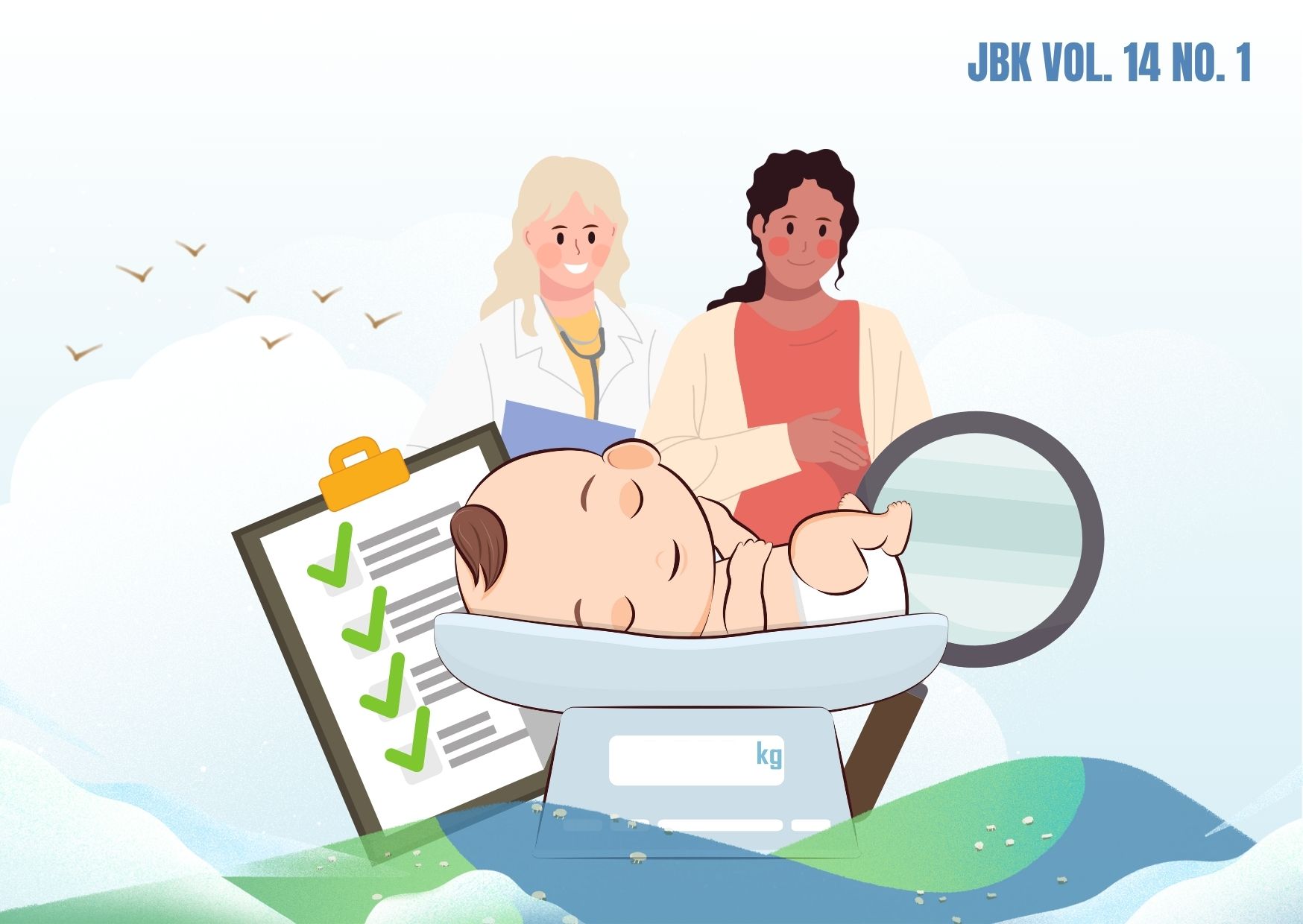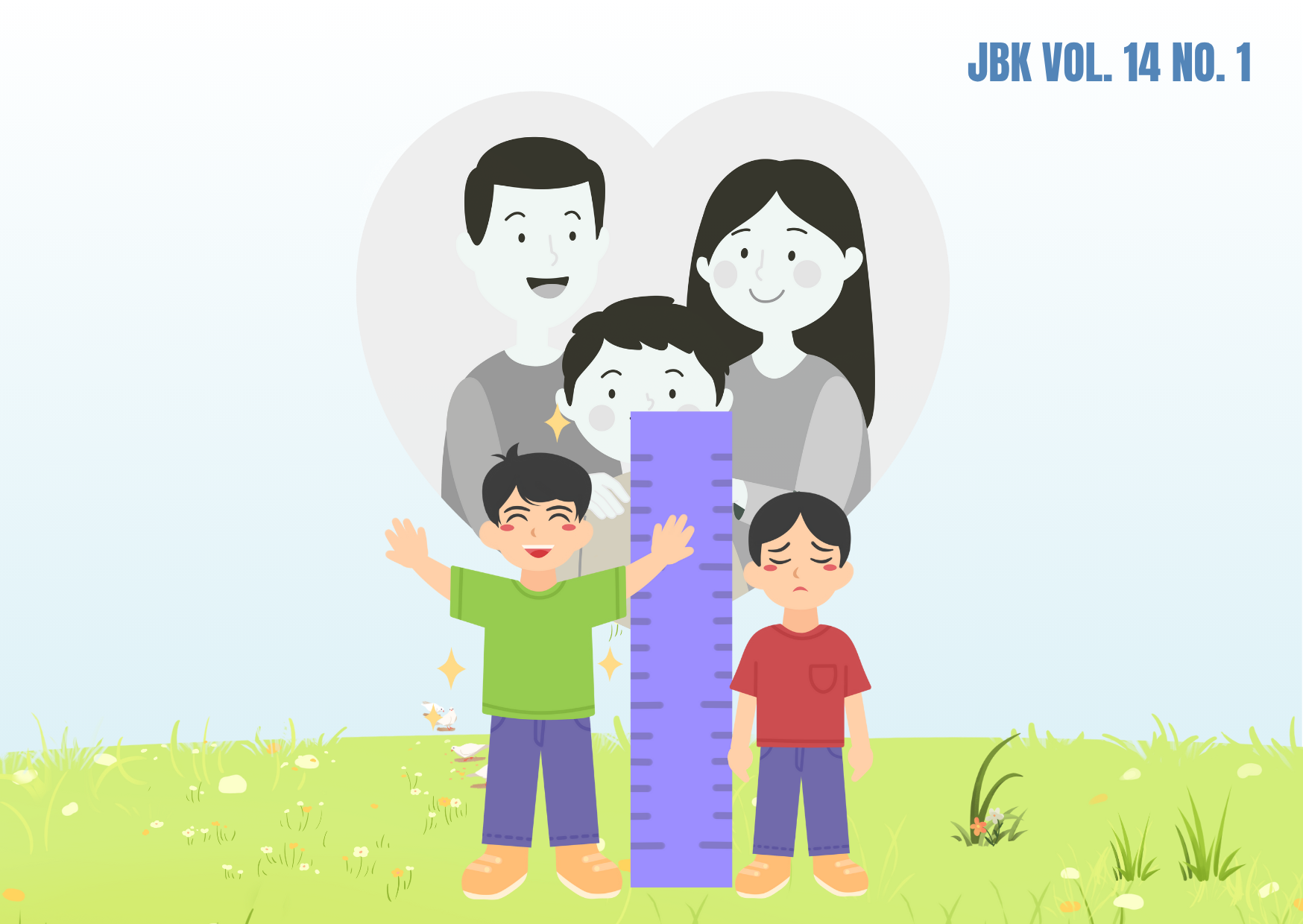DECOMPOSITION METHOD FOR FORECASTING THE NUMBER OF PARTICIPANTS OF NEW FAMILY PLANNING IN SURABAYA
Downloads
Indonesia is a country that has a large population and Family Planning Program was initially designed to control the population. This study aimed to forecast new Family Planning Program participants in the city of Surabaya in 2019 using the decomposition method. This study used secondary data, which is the number of participants for new Family Planning Program in January 2014 to December 2018 (60 plots of data) obtained from the PCWECP Surabaya. The researcher chose decomposition method in this study because decomposition is a one-time series method that has rarely been applied in a research. Based on the results of the study, the number of participants for new Family Planning Program from January to December 2019 was 2,776; 2,663; 2,504; 2,340; 2,440; 1,912; 2,034; 2,291; 2,223; 2,123; 2,123; 2,130 and 2,560 participants. The error value generated by this study is MAPE of 9, MAD of 365, MSD 197,738, and MSE of 2.1675. The best error value is the one that has the smallest value, so the MSE is the best model.
Aprilia, D., 2018. Penerapan Metode Forecast Exponential Smoothing pada Jumlah Pasien Puskesmas. Jurnal Biometrika dan Kependudukan, 5 (2), pp.146–156.
Arianti, C., and Wibowo, A., 2015. Pemodelan ARIMA Jumlah Pencapaian Peserta KB Baru IUD. Jurnal Biometrika dan Kependudukan, 4 (2), pp.191–200.
Azis, S., 2012. Management of Family Planning Programs. Media of Health Research and Development, 7 (03 & 04 Dec).
Bawing, P., Wilopo, S. A., and Padmawati, R.S., 2017. Analisis Pelaksanaan Kebijakan Program Keluarga Berencana: Studi Kasus di Malinau. BKM Journal of Community Medicine and Public Health, 33 (12) pp.615–622.
Hafsari, T. A., 2018. Meraih Bonus Demografi melalui Program Keluarga Berencana. [online] Available at: <http://kependudukan.lipi.go.id/en/population-study/population-dynamics/474-meraih-bonus-demografi-melalui-program-keluarga-berencana> [Accessed 18 Jun. 2019].
Harjono, A. E., and Kuntoro, 2017. Perbandingan Hasil Peramalan Jumlah Kasus HIV Berdasarkan Jenis Kelamin di Kota Malang dengan Metode Exponential Smoothing. Jurnal Biometrika dan Kependudukan, 6 (1), pp. 9–16.
Herawati, R., 2014. Faktor-Faktor yang Mempengaruhi Rendahnya Pemakaian KB Implan di Desa Margamulya Wilayah Kerja Puskesmas Rambah Samo I Tahun 2013. Maternity and Neonatal, 1 (3), pp.196–209.
Hyndman, R. J., and Athanasopoulos, G., 2018. Forecasting: Principles and Practice. 2nd ed. Melbourne: OTexts.
Januar, I., 2011. Implementation of Family Planning Program (KB) Policy in the City of Bandung. (July).
Kasanah, L. N., 2016. Aplikasi Autoregressive Integrated Moving Average (ARIMA) untuk Meramalkan Jumlah Demam Berdarah Dengue (DBD) di Puskesmas Mulyorejo. Jurnal Biometrika dan Kependudukan, 5 (2), pp.177–186.
Makridakis, S., Wheelwright, S.C., and McGee, V.E., 1995. Metode dan Aplikasi Peramalan. Revised Edition. 2nd ed. Jakarta: Erlangga.
Muhammad, N., and Kharis, A., 2014. Analisis Peramalan Pendaftaran Siswa Baru Menggunakan Metode Seasonal ARIMA dan Metode Dekomposisi. Thesis. Universitas Islam Negeri Syarif Hidayatullah.
National Board of Population and Family Planning, 2018. Peran BKKBN di Balik Gerakan Penanggulangan Stunting. Jurnal Keluarga, (1), pp.44.
Pratama, Y. A., and Indriani, D., 2017. Peramalan KB Baru IUD dengan Metode Automatic Clustering and Fuzzy Logical Relationship. Jurnal Biometrika dan Kependudukan, 6 (2), pp.144–153.
Law of Indonesian Republic Number 52 Year 2009 Conserning Perkembangan Kependudukan dan Pembangunan Keluarga.
Yuni, S., Talakua, M. W., and Lesnussa, Y. E. S., 2015. Peramalan Jumlah Pengunjung Perpustakaan Universitas Pattimura Ambon Menggunakan Metode Dekomposisi. Barekeng: Jurnal Ilmu Matematika dan Terapam, 9 (1), pp.41–50.
Copyright ©2022 Jurnal Biometrika dan Kependudukan (Journal of Biometrics and Population)
This work is licensed under a Creative Commons Attribution-NonCommercial-ShareAlike 4.0 International License.
1. Copyright of all journal manuscripts is held by the Jurnal Biometrika dan Kependudukan.
2. Formal legal provisions to access digital articles of the electronic journals are subject to the provision of the Creative Commons Attribution-ShareAlike license (CC BY-NC-SA), which means that Jurnal Kesehatan Biometrika dan Kependudukan to keep, transfer media/format, manage in the form of databases, maintain, and publish articles.
3. Published manuscripts both printed and electronic are open access for educational, research, and library purposes. Additionally, the editorial board is not responsible for any violations of copyright law.



































